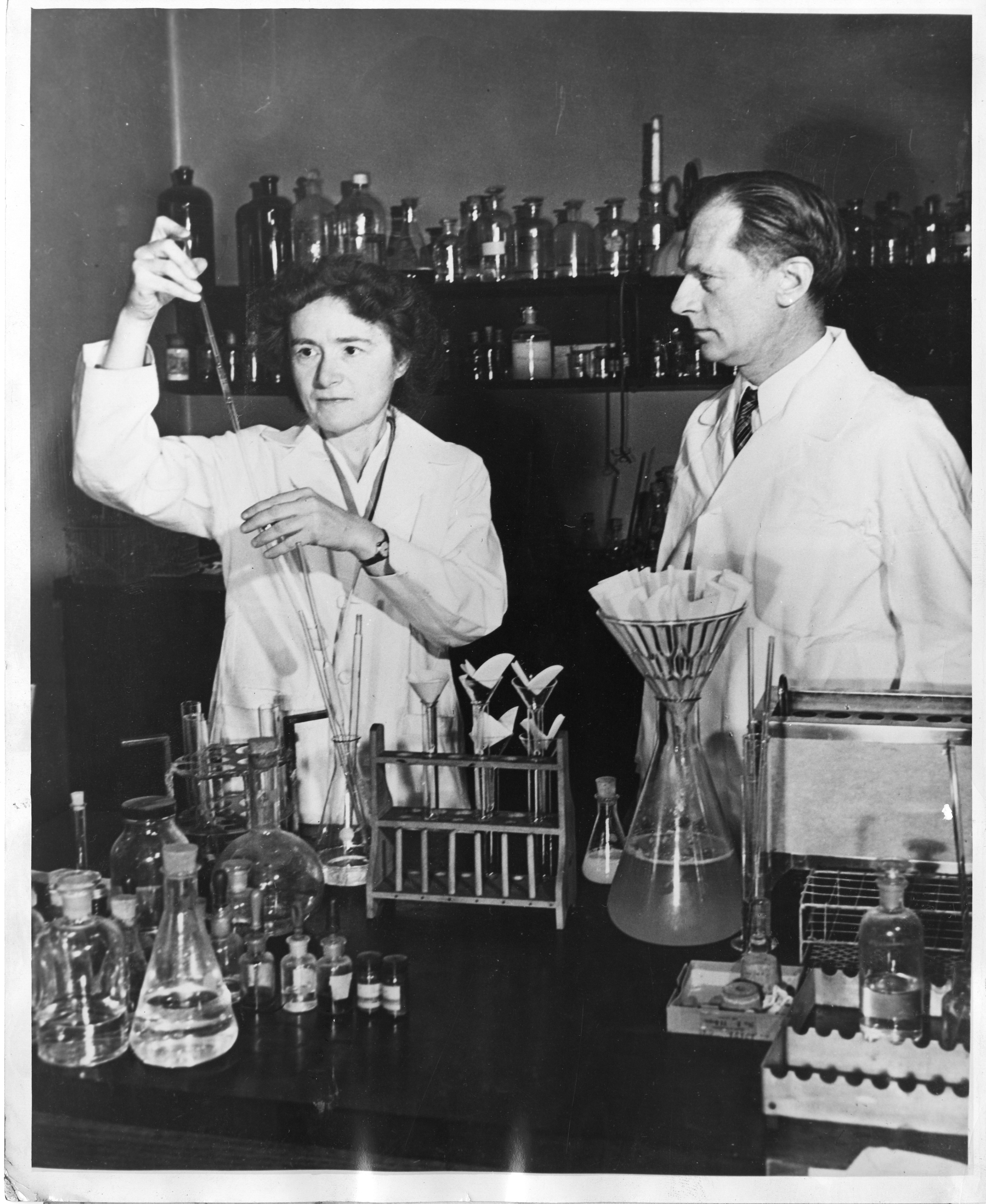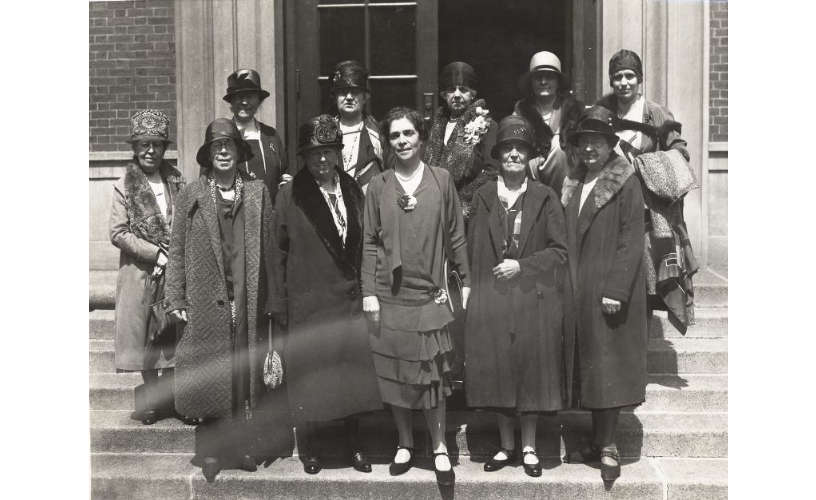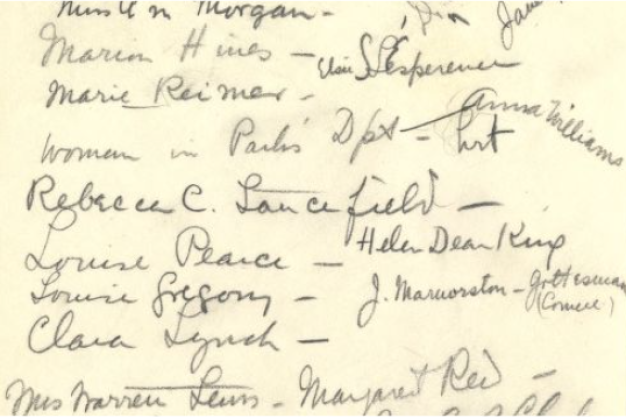Sabin’s Women in Science: A Mystery in the Archives
Header image: Detail from handwritten page of Florence Rena Sabin’s list of women in science. APS.
In my work on the American Philosophical Society’s latest exhibition, Pursuit & Persistence: 300 Years of Women in Science, I found myself frequently in the archives. My particular focus was on one set of papers: those of Dr. Florence Rena Sabin, a notable figure in the history of medicine. Sabin is probably best known for the research on tuberculosis she conducted at the Rockefeller Institute, where she worked for over a decade.
In her time, Sabin was a prominent public figure. This name recognition made her a prime source for those seeking information about other women in science—from female undergraduates preparing to go to medical school, to publications hoping to write profiles on female scientists, to universities seeking to hire female faculty members. I read through a considerable number of letters of this nature in my archival research, but among them I found something that particularly stood out.
Nestled among correspondence asking Sabin for research papers and newspaper interviews, I found a folder labeled “Women in Science,” a title which instantly struck me. In the folder are a few papers: one page on University of Pennsylvania letterhead bearing the names and brief resumes of two women, a list of handwritten names, and then, most excitingly, a typewritten list of 85 women’s names. Otherwise, I could find no information about the purpose of these documents. In an effort to discern its purpose, I began to research the names on the list.
The list provides a detailed snapshot of women in the medical field in the early 20th century. The women I was able to locate range from biochemists to psychiatrists to geneticists—all pioneers in their fields. Many are the first female graduates of their respective Ph.D. or M.D. programs, or the first female faculty members at their respective institutions.
Ultimately, my interest in these papers spiraled into a full-blown project. I produced a file of brief biographies for all 85 listed women. This served to supplement another product of my internship–creating a file of more in-depth biographies of female scientists who had ties to the APS. Among those on Sabin’s list, there was a single member of the American Philosophical Society: the Nobel laureate Gerty Cori (APS 1948).

Among the names of these famous researchers, doctors, and scientists, there are also gaps. Some of the women on the list, doubtlessly just as accomplished as the others, are nearly untraceable in the historic record. For a number of names, I would find a single published paper, a name in a conference program, or a graduation date. For others, I was only able to locate them in census records, identifiable by their education level (listed as “College, 5th year or beyond”) or by their places of employment (often listed vaguely as “University” or “Laboratory,” alongside job titles such as “Researcher,” “Chemist,” or “Teacher”). For one or two, I found nothing at all. The hours I spent searching for these individuals served as a stark reminder of just how easily female scientists can fall through the cracks of history.

I still cannot say with any certainty what Sabin’s intent was when creating this list. She was asked with some frequency to provide recommendations of female scientists to institutions looking to hire more women, so it is possible that it was a reference for that purpose. It maps a network of mentorship, teaching, and support amongst female scientists, one of many that appears in Pursuit & Persistence.

